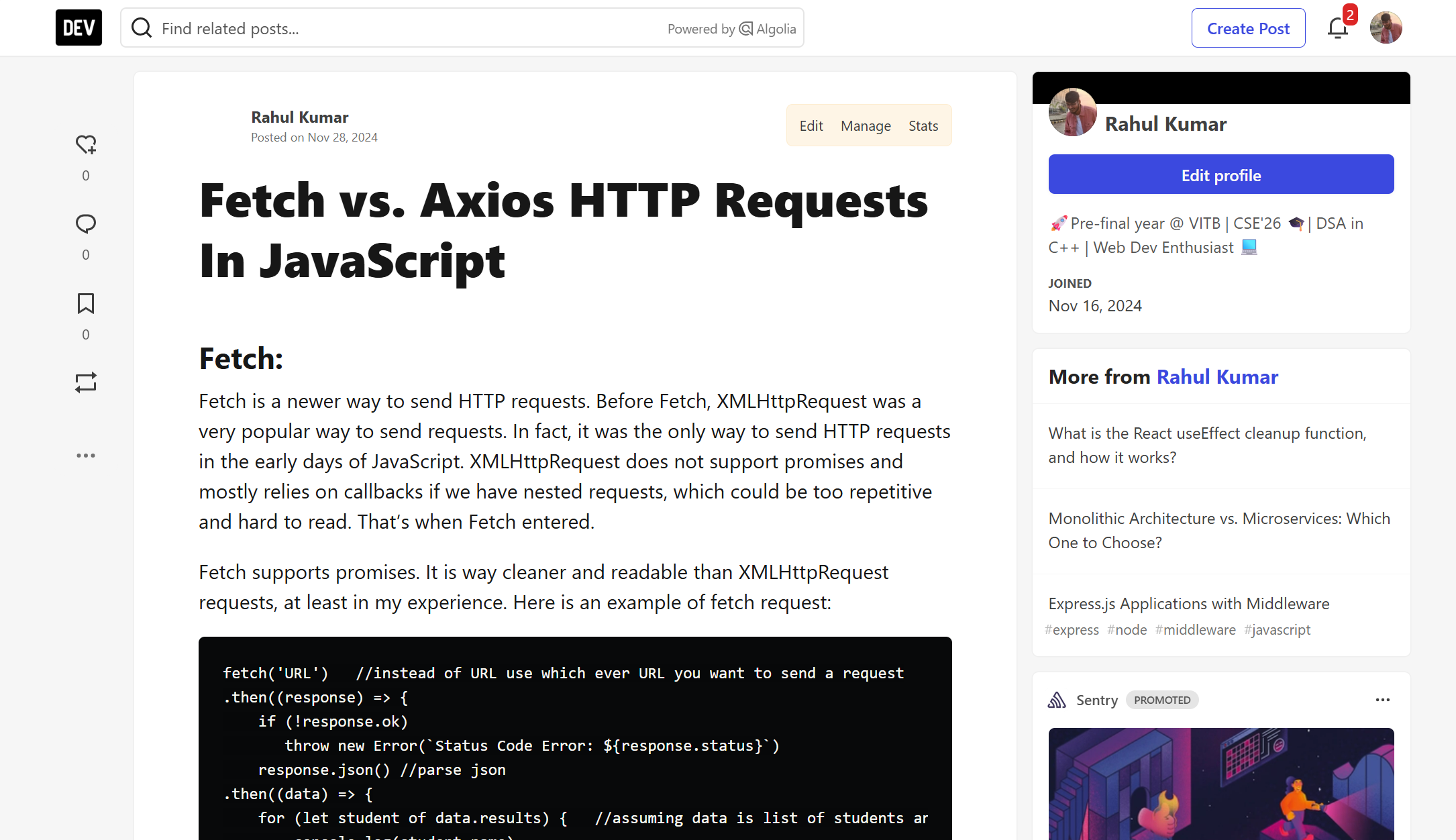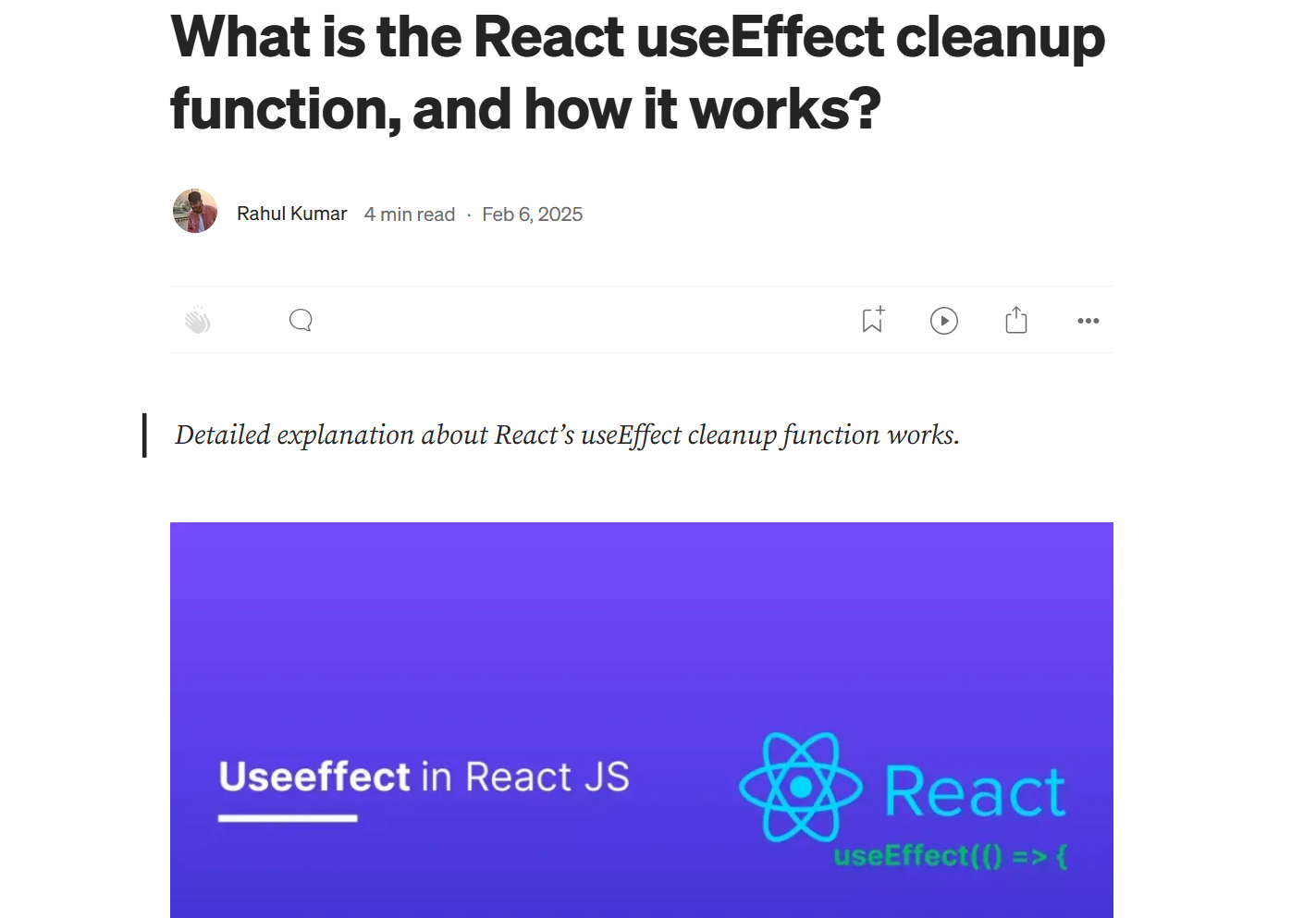Fetch vs. Axios HTTP Requests In JavaScript

Fetch is a newer way to send HTTP requests. Before Fetch, XMLHttpRequest was a very popular way to send requests. In fact, it was the only way to send HTTP requests in the early days of JavaScript. XMLHttpRequest does not support promises and mostly relies on callbacks if we have nested requests, which could be too repetitive and hard to read. That’s when Fetch entered.
Fetch:
Fetch supports promises. It is way cleaner and readable than XMLHttpRequest requests, at least in my experience. Here is an example of fetch request:
fetch('URL') // instead of URL use whichever URL you want to send a request
.then((response) => {
if (!response.ok)
throw new Error(\`Status Code Error: \${response.status}\`);
return response.json(); // parse json
})
.then((data) => {
// assuming data is list of students or any object
console.log(data);
})
.catch((err) => {
console.log(err);
});Axios:
Axios is a promise-based HTTP client for the browser and Node.js. It provides a higher-level API for making HTTP requests and comes with many features out of the box, like automatic JSON data transformation, request/response interception, and more.
axios.get('URL')
.then((response) => {
console.log(response.data);
})
.catch((error) => {
console.log(error);
});Comparison
- Fetch: Native, promise-based, needs manual error handling, no built-in request cancellation.
- Axios: Feature-rich, supports older browsers, automatic JSON transform, request cancellation, interceptors.
"Choose Fetch for modern, lightweight needs. Choose Axios if you want more features and browser support."
Both are great tools—pick the one that fits your project’s requirements!

About Rahul Kumar
Full Stack Developer with a passion for technology, JavaScript, and sharing knowledge on web development and computer science.

